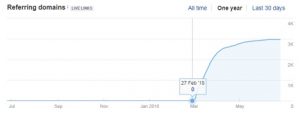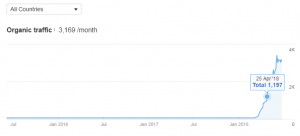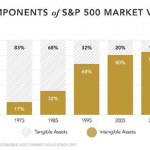Is Google plotting against you and tossing you into the Sandbox?

You have launched your shiny, sleek new fashion e-Commerce website replete with pictures, alt text and content. But even after a week of tapping your keywords into Google search engine your website doesn’t appear – not on the first, second or even third SERP (search engine results pages).
What’s going on? Is Google plotting against you?
It may well be that your website has sunk deep into the Sandbox, and not the proverbial sandbox – no, the Google Sandbox.
What Is Google Sandbox?
Put simply, Sandbox is an alleged filter put in place on new websites by Google, preventing them from ranking in Google’s top results. Think of it like a probationary period. Your website is put on probation and will not receive good rankings for its most important keywords or key phrases. Even with great content, captivating images and worthy links, your site will not rank highly on Google.
As far back as 2004, web experts and SEO gurus noticed their newly launched websites were barely ranking in Google in the first few months despite their best SEO efforts. However, they seemed to rank well in Bing and Yahoo.
As an example, take Rand Fishkin whose SEOmoz site was believed to have been Sandboxed for nine months. The site had 12,000+ genuine links too. Eventually, after nine gruelling months of being succumbed to oblivion the links paid off and SEOmoz was released.
Does the Sandbox phenomenon really exist?
Or Is Google Sandbox Just A Myth?
Google will neither confirm nor deny the existence of Sandbox. Yet there are just too many signs to validate its survival and it is widely accepted as fact. Beyond the signals though, it kind of makes sense that Google would have a filter in place to help optimise its search engine. Think about it: thousands of new websites are launched every day. Many of these sites will employ tactics to manipulate the search engine and obtain more clicks. Google doesn’t want to push these less-relevant sites up the top of a search. So, new sites are filtered until they have gained Google’s respect amongst trillions of other websites out there.
Why Did Google Initiate Sandbox?
It is alleged that Google created Sandbox to stop spam-related sites from adding purchased links to rank highly from popular keywords from launch date. Spam sites would use a variety of shifty tactics to rise to the top of search results to gain optimum sales prior to being banned for violating Google’s Terms of Service, only to repeat the process again and again. In consequence, Google put new sites into probation – aka Sandbox.
What Types Of Sites Are Placed In The Sandbox?
While any website can be placed in the Sandbox, the issue appears to be with new websites that hunt for rankings on highly competitive keywords. All sites may spend some time in the Sandbox but those seeking ranking in popular searches are buried deeper and probably in for a longer stretch.
What Stops New Websites From Ranking?
Now that we have established that unfortunately any new website can be seized and tossed into the Sandbox, let’s take a look at what could be stopping you from ranking in Google.
The most important quality characteristics Google looks for in a website are Expertise, Authoritativeness and Trustworthiness. Factors likely preventing Google from ranking you are:
- Lack of content
Google might not see enough content on your website to understand its thematic relevance. You might need more content, data, pictures and videos for Google to decide what keyword bucket you belong in.
- Lack of user signals
SEO experts are confident that CTR (click-through rate), bounce rate and dwell time are among popular ranking factors. Google has to process behavioural metrics on your website relative to others, and therefore might delay ranking for competitive keywords.
- Lack of quality backlinks
Alongside content, backlinks are one of thetop three ranking factors for Google. If your backlinks are weak and your content is not yet strong enough, why would Google rank it above other high content sites with quality backlinks?
Ahrefs did a study of ranking factors to show the correlation between the number of referring domains and rankings. The strong correlation suggested that backlinks carry more weight on your page’s rankings than exact keyword match.
- Industry and competition
Some SEO experts believe Google behaves differently across various niches, levels of competition and content type. For example, medical and legal websites require more time and quality backlinks to achieve SERP leverage. If you consider that their content must be taken seriously these sites might rank almost immediately, particularly if they lie in small niches.
How Will You Know If You’re In The Sandbox?
Your new website isn’t ranking in Google but how do you really know if you’re in the Sandbox or if Google has just tossed you aside to the proverbial naughty corner, never to return? Not easy, but you can look for evidence of Sandbox activity. Does your website have a strong PageRank with good incoming links? Does it get top search results in Bing and Yahoo? If so, and if your site is nowhere to be found for popular searches it is likely you’re in the Sandbox.
Daily Blog Money didn’t start receiving good traffic until six months after publishing its first post. The blog started out fine and suddenly dropped to zero for six whole months, as shown below.
Daily Blog Money traffic profile via Daily Blog Money
And you’re likely to be wedged in the Sandbox for an average of three months, although depending on how competitive your search keywords are, you could be stuck there for six to nine months.
Can You Prevent Being Placed In The Sandbox?
To a degree you might be able to avoid the Sandbox. Purchasing a website and making it live before it is fully ready to go can speed the process along. Sure, you will endure low rankings but it will start the countdown on Sandbox’s release time. But be sure to add as many quality incoming links as possible. Plus, don’t forget to keep adding content. Or anything that is going to speed up your site’s quality and respect on the internet.
To prove you can avoid The Sandbox with outstanding content here is a screenshot from Ahrefs Site Explorer showing backlinks for Sparktoro.com.
Backlink profile report for sparktoro.com, via Ahrefs Site Explorer
Impressed? Well, check out the number of organic keywords and traffic for Sparktoro.com:
Organic Keywords report for sparktoro.com, via Ahrefs Site Explorer
What Can You Do To Get Out Of The Sandbox?
You can’t guarantee you’ll avoid the Sandbox, even if your website is seamless, striking, teeming with quality backlinks. But following these below tips could help you stumble out of it sooner.
- SEO practices
Review your site again and again to ensure you are following the best SEO practices. Don’t start using black hat tactics (aggressive SEO strategies that focus solely on search engines and not human audience). Kick the habit and start doing things the right way.
- Review backlinks
Re-examine the incoming and outgoing links on your site. It is important to have high quality, genuine links in the correct proportions. If they are paid or sponsored links this might affect how Google views your site.
- High quality content
Maintain your content by updating it, keeping it fresh and new. Even compare it to competitors’ content and make it informative and entertaining to keep your audience interested and reading to the end. Prove to Google that you have good intentions.
- See where your audience hangs out
Brainstorm where your audience hangs out. Could it be forums, Facebook groups, LinkedIn? Start participating in discussions to establish your credibility. When people start trusting you, you can lead them to your content. Take it as far as guest posting and blog commenting on authority sites.
- Build a social media fortress
Share posts across all the relevant social sites you can think of and build a fortress. Relevant sites might include YouTube, Blogger, WordPress, Twitter, Facebook, Instagram.
Once you follow these steps you should start seeing traffic stick around on your website. Google will see you’re an active player in your niche and within time you’ll be moving up the rankings.
At the end of the day, don’t worry about Sandbox. Follow the tips and Google Sandbox will valorise your content and backlinks and send you out into the big wide world of high rankings.
Nital Shah is the founding director at Octos Digital Marketing Agency. He has served big corporate brands of Australia and has more than 10 years of experience under his belt with a profound level of expertise in search strategies, planning and management












